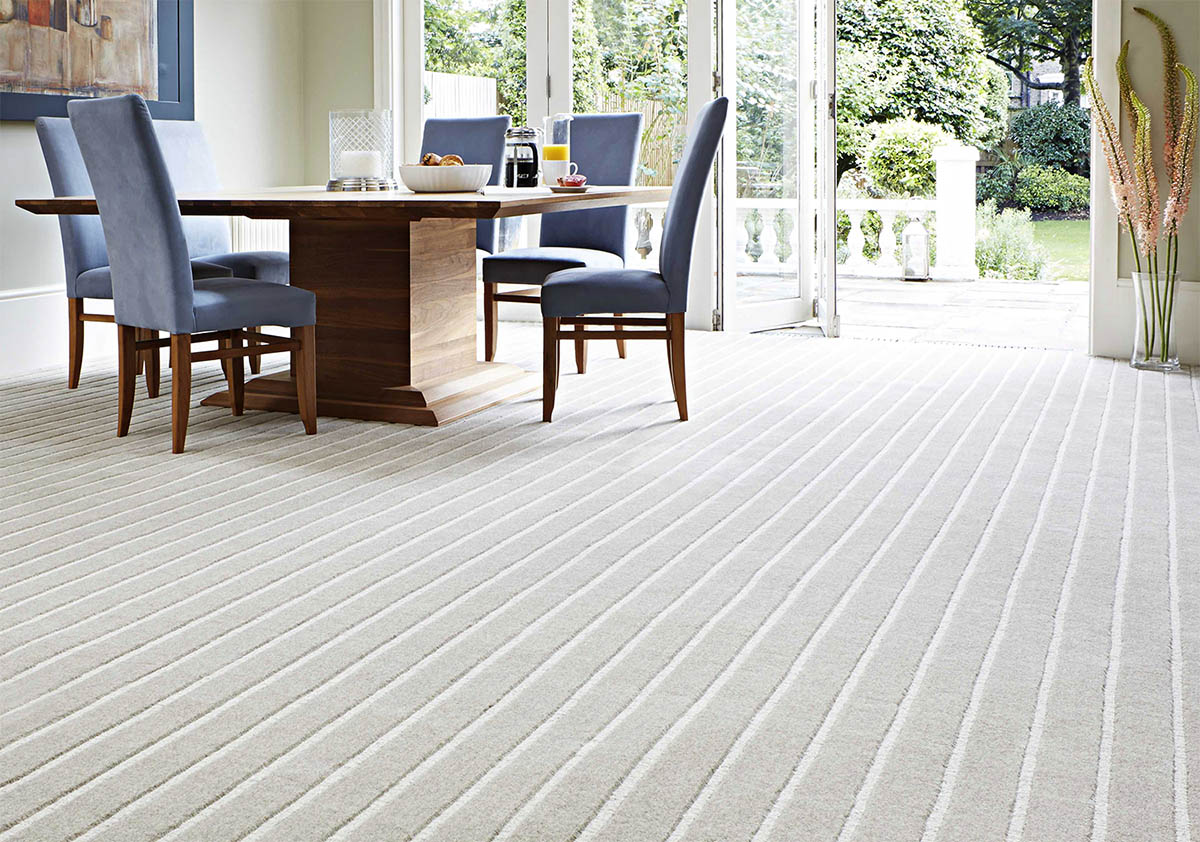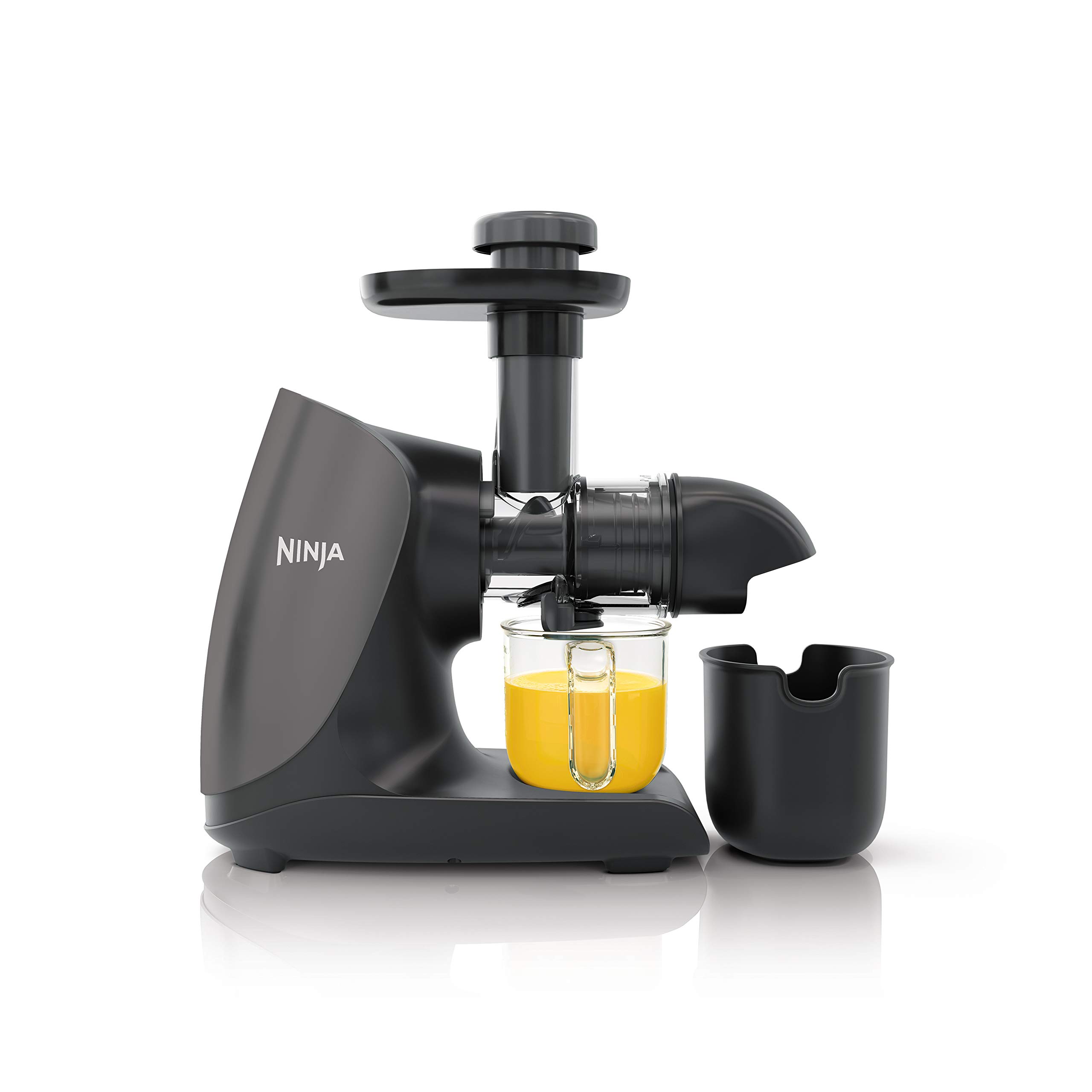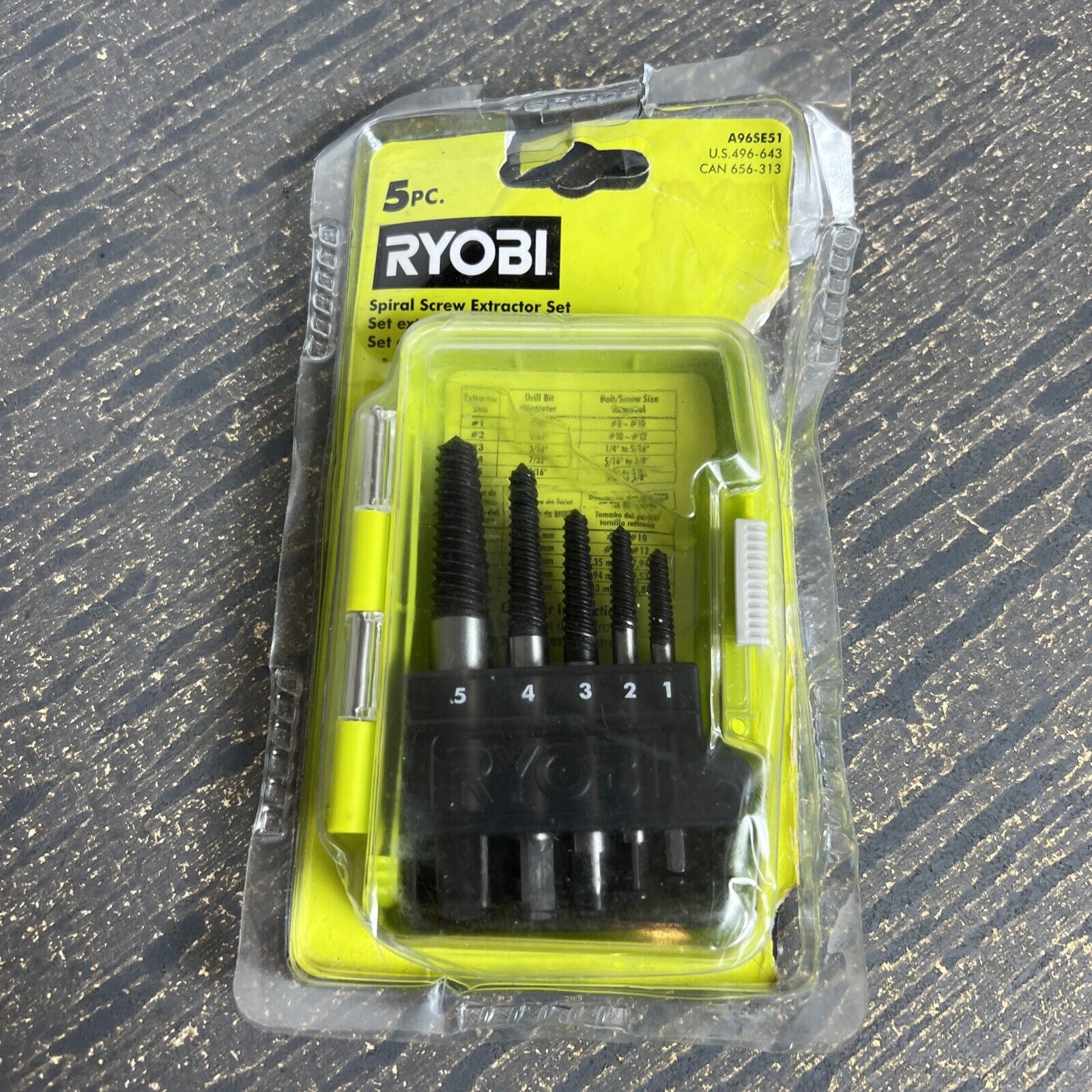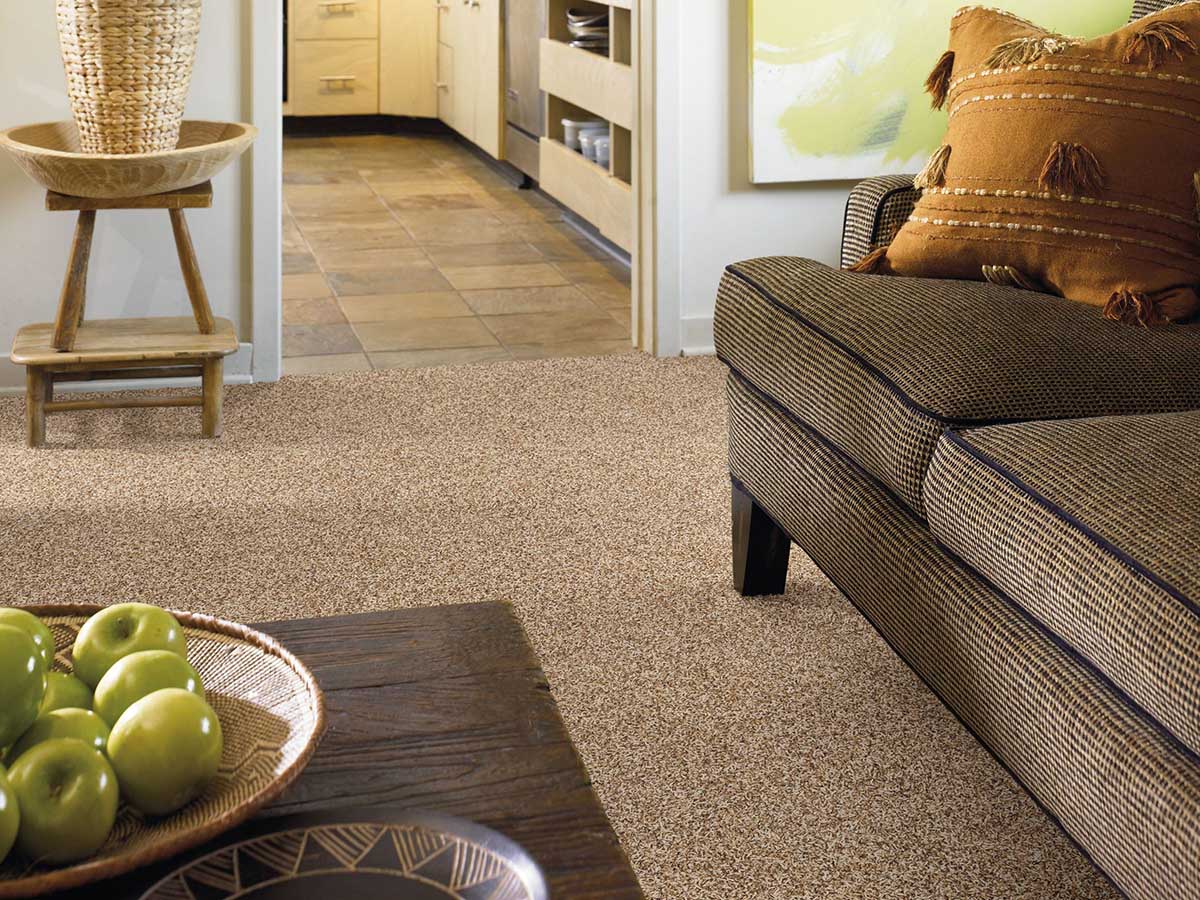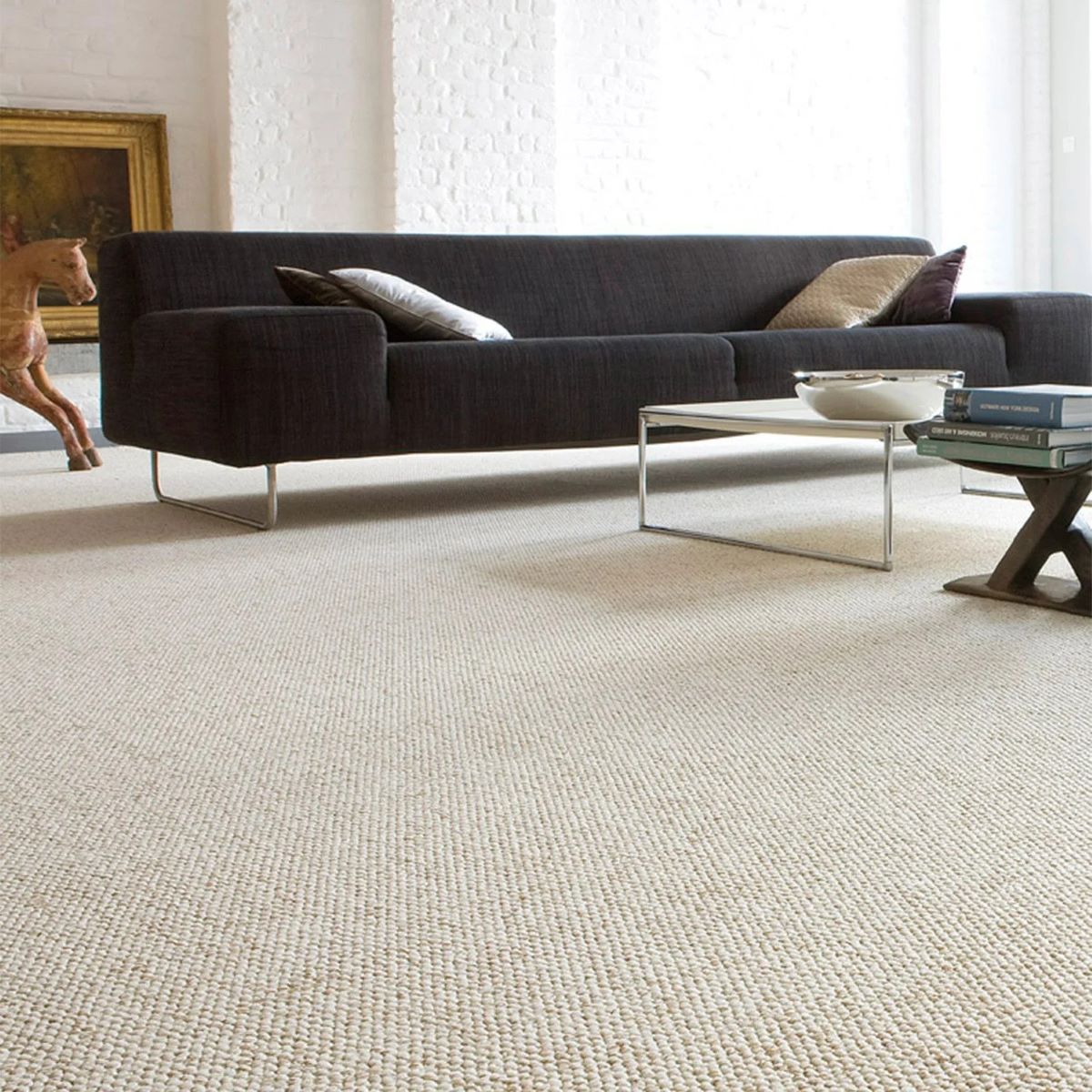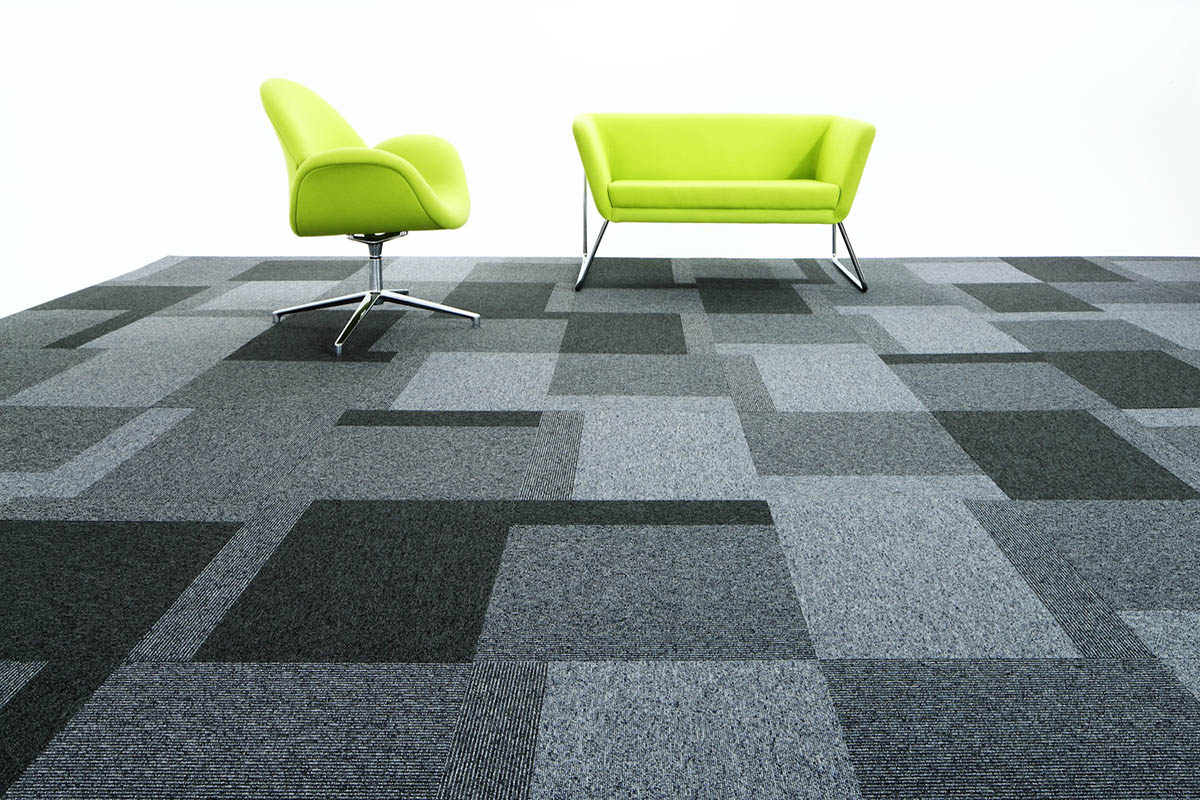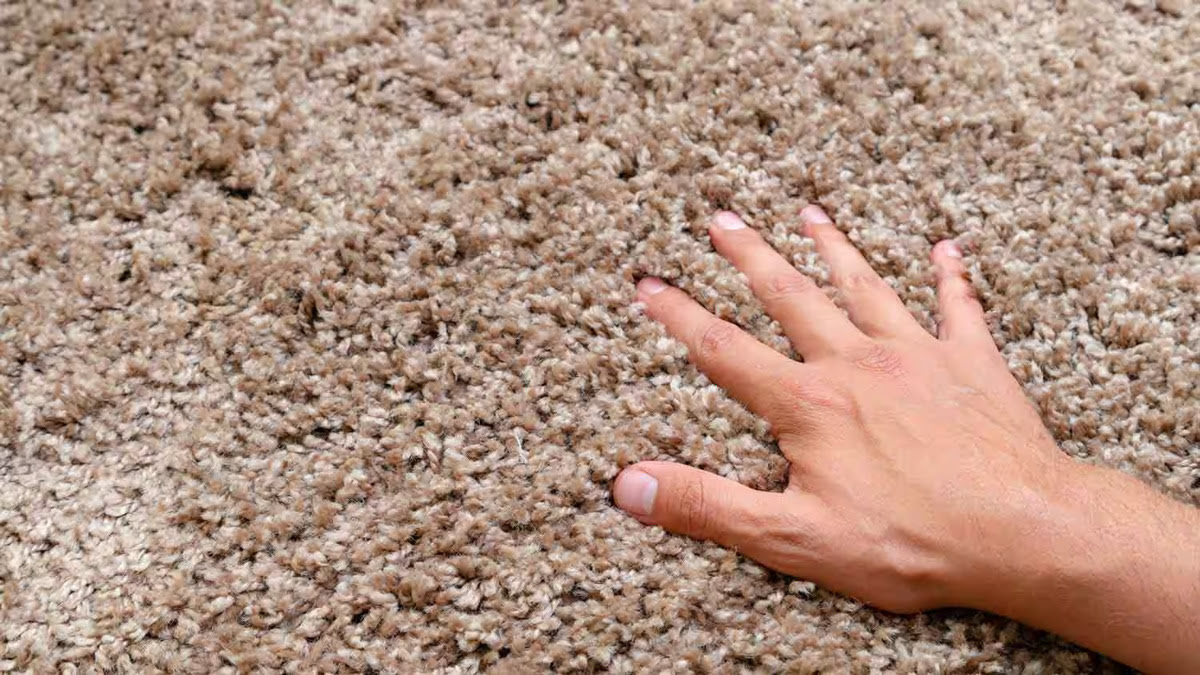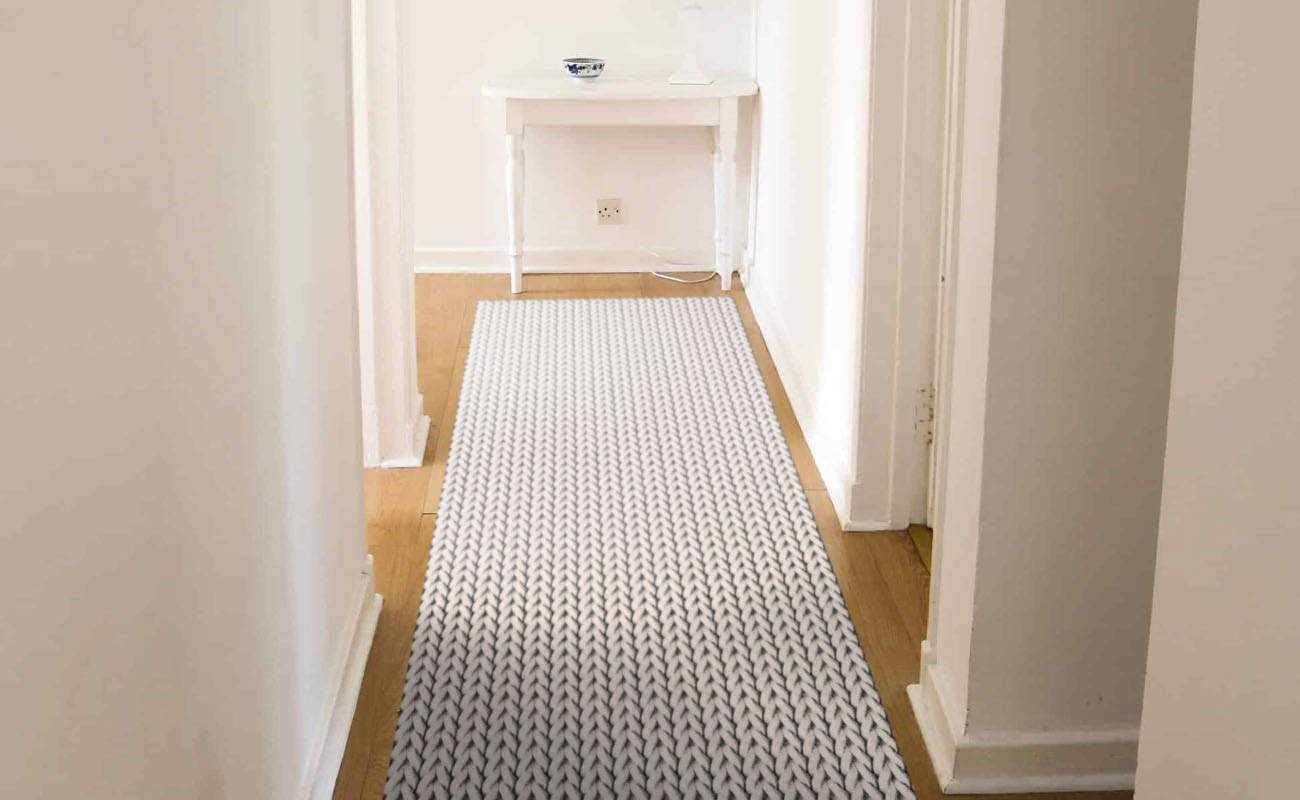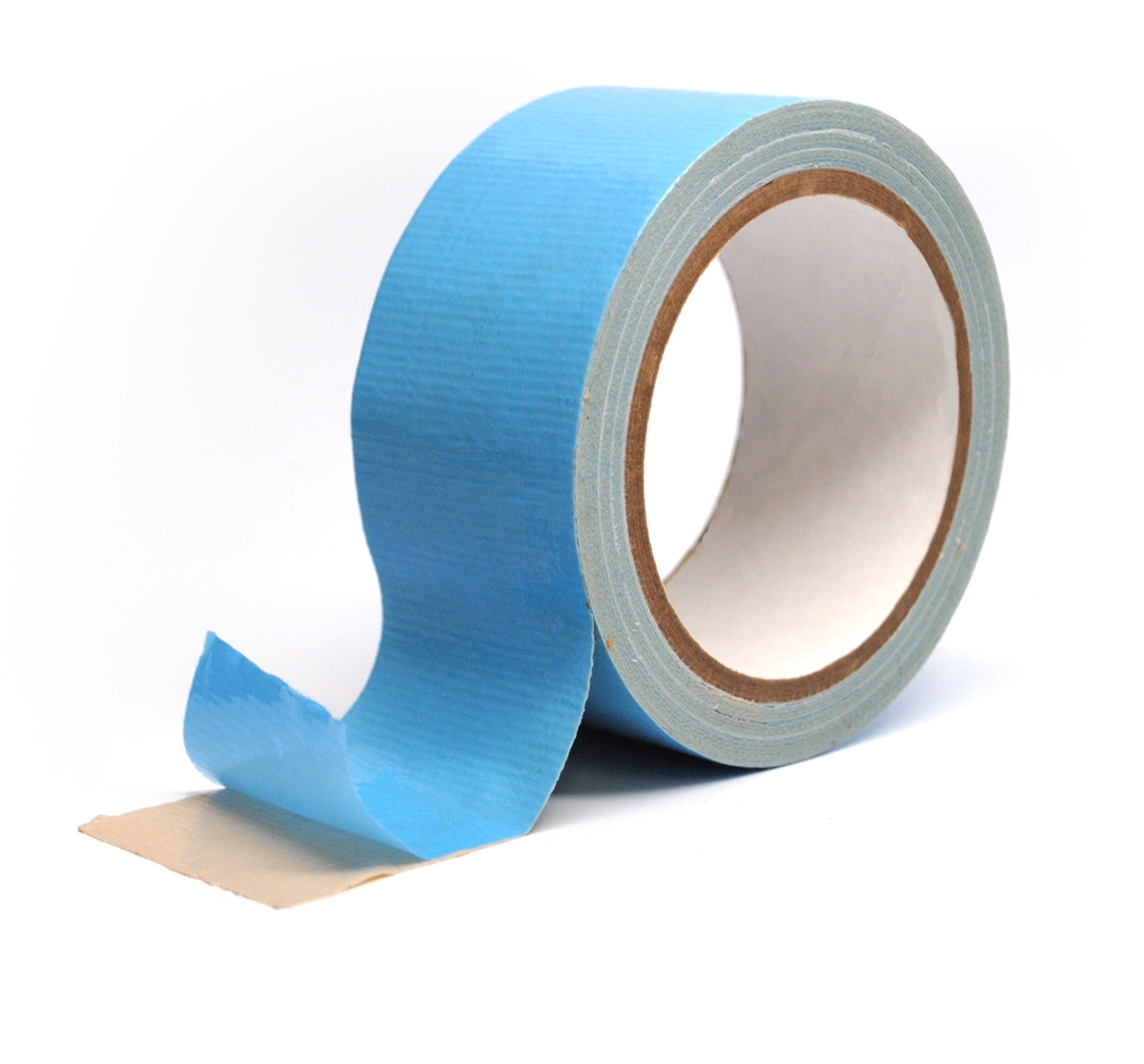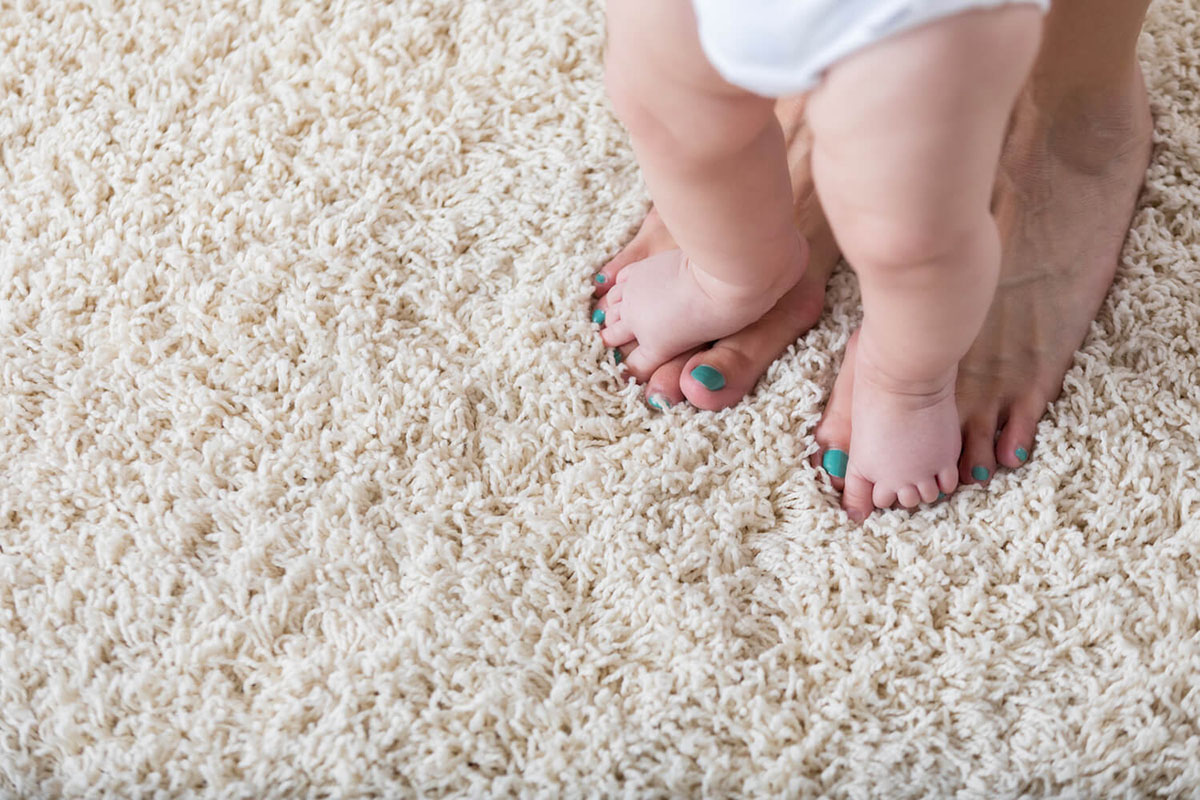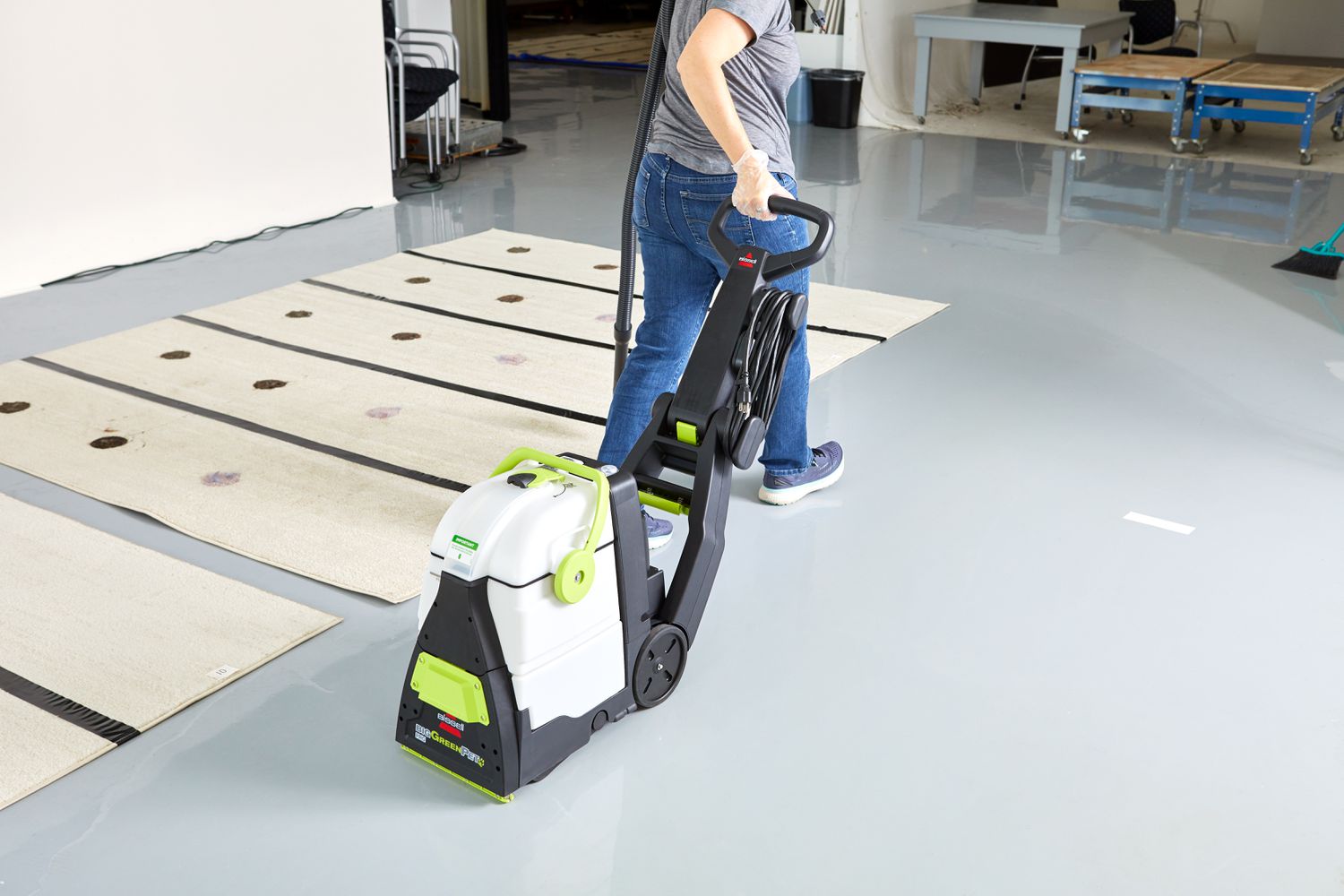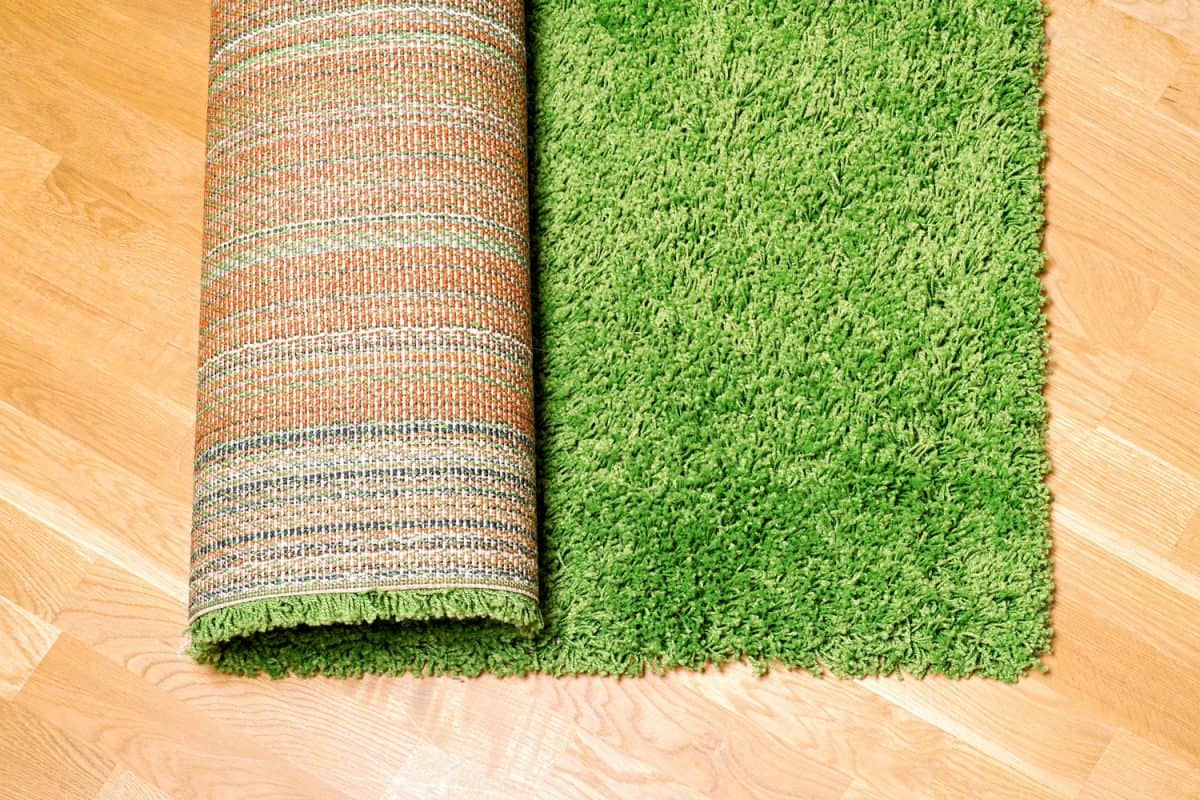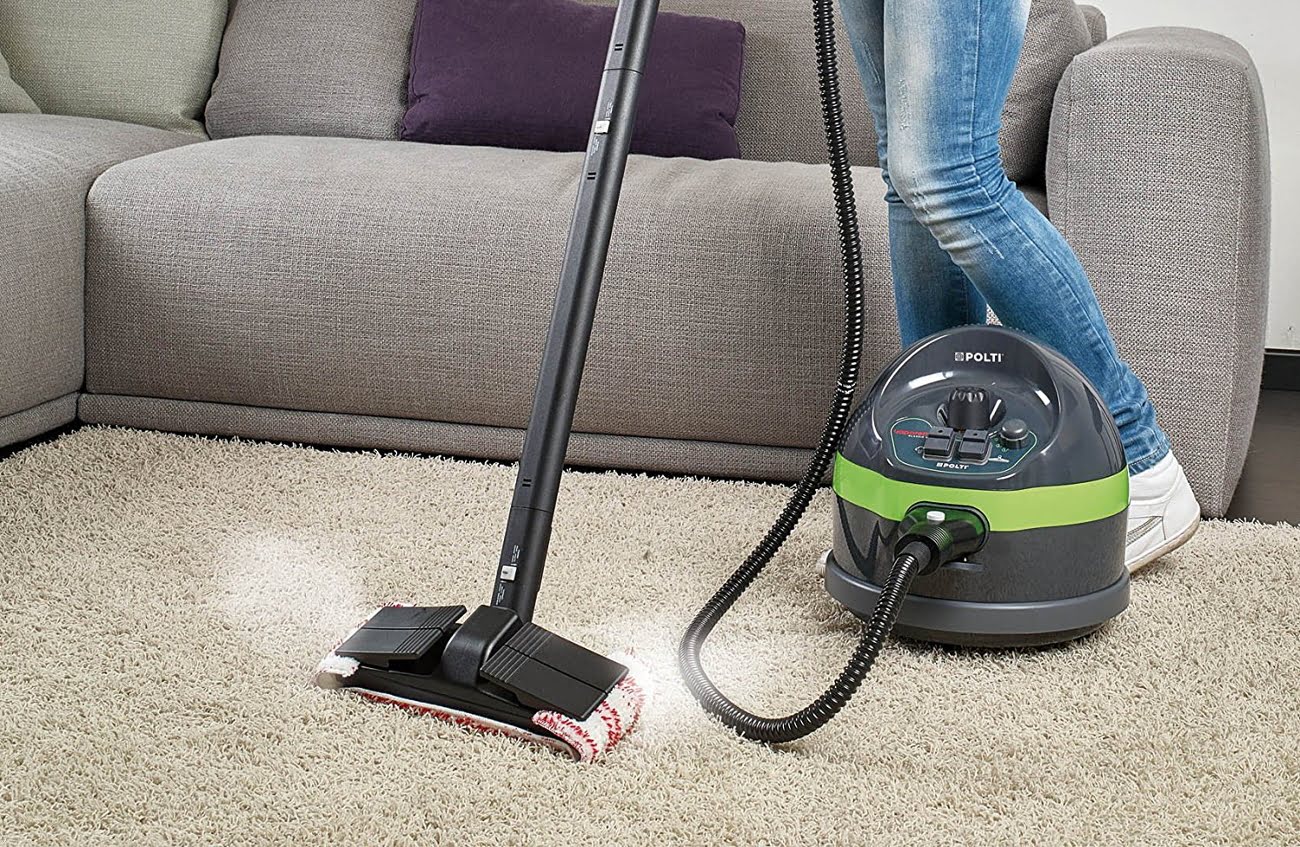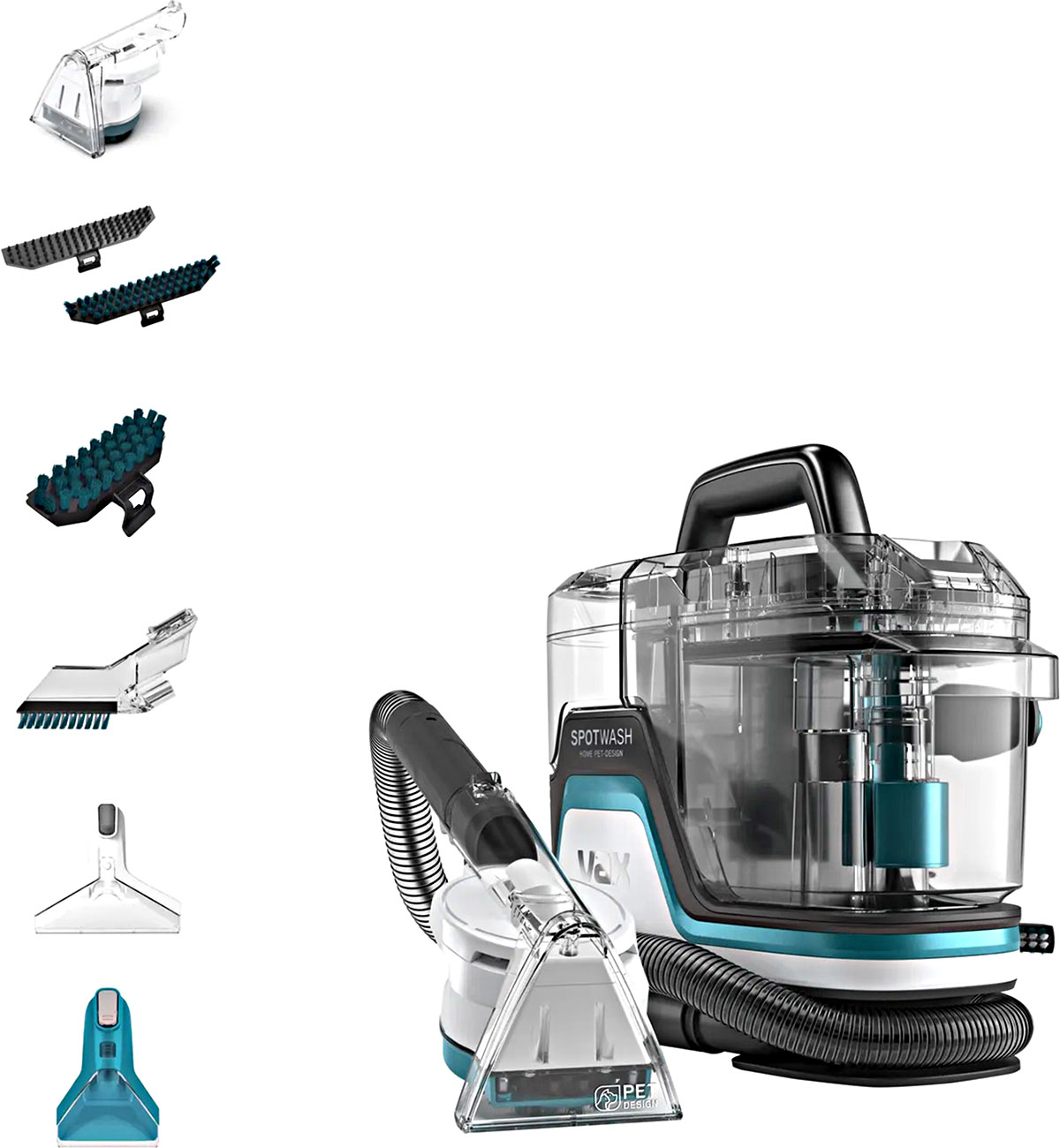

Articles
What Is A Carpet Extractor
Modified: February 29, 2024
Learn about carpet extractors with our informative articles. Find out how they work and why they are essential for deep cleaning carpets.
(Many of the links in this article redirect to a specific reviewed product. Your purchase of these products through affiliate links helps to generate commission for Storables.com, at no extra cost. Learn more)
Introduction
When it comes to maintaining the cleanliness of carpets, regular vacuuming is a great start. However, there are times when carpets require a more thorough cleaning to remove deeply embedded dirt, stains, and odors. This is where a carpet extractor comes into play. A carpet extractor is a powerful cleaning machine that uses a combination of hot water, detergent, and suction to effectively clean and refresh carpets.
In this article, we will explore the world of carpet extractors, understanding what they are, how they work, the different types available, the benefits of using them, factors to consider when choosing one, proper usage and maintenance tips, as well as common troubleshooting techniques.
If you’ve ever wondered how professional cleaners manage to revive carpets and achieve remarkable results, a carpet extractor is often their secret weapon. By understanding what a carpet extractor is and how it works, you can bring the power of professional-grade cleaning into your own home or business.
So, let’s dive in and discover the ins and outs of carpet extractors.
Key Takeaways:
- Carpet extractors are powerful machines that provide deep cleaning, stain removal, and improved indoor air quality. They offer convenience, time savings, and professional-level results, making them essential for maintaining clean and healthy carpets.
- When choosing a carpet extractor, consider factors such as the type of use, size of the area, power and performance, tank capacity, portability, drying time, and budget. Proper usage and maintenance are crucial for ensuring optimal performance and longevity.
Read also: 9 Unbelievable Carpet Extractor for 2024
Definition of a Carpet Extractor
A carpet extractor is a specialized cleaning machine designed to deep clean carpets by spraying a mixture of hot water and detergent onto the carpet fibers and then extracting the dirty water and debris using high-powered suction. It is an essential tool in the carpet cleaning industry and is also used by homeowners and businesses to maintain the cleanliness and appearance of their carpets.
Carpet extractors are often referred to as carpet cleaners, carpet shampooers, or carpet steam cleaners. While there are slight variations in the design and features of different models, the basic principle remains the same – to thoroughly clean carpets by agitating the fibers, loosening dirt and debris, and then removing them with suction.
These machines are available in different sizes and configurations, ranging from portable units for residential use to larger, more robust machines used in commercial settings. They are typically equipped with a reservoir for holding the cleaning solution, a pump for spraying the solution onto the carpet, brushes or scrubbers to agitate the fibers, and a powerful vacuum system for extracting the dirty water and excess moisture.
Carpet extractors come in various types, including hot water extractors, portable extractors, truck-mounted extractors, and encapsulation extractors. Each type has its own set of advantages and is suitable for different applications and environments.
Next, let’s take a closer look at how a carpet extractor actually works to understand the cleaning process and the benefits it offers.
How Does a Carpet Extractor Work?
A carpet extractor works by combining several key components to effectively clean and refresh carpets. The process typically involves the following steps:
- Preparation: Before using a carpet extractor, it is important to prepare the carpet by removing any loose debris and vacuuming it thoroughly. This step helps to ensure that the extractor can focus on deep cleaning rather than surface dirt.
- Solution Application: The first step in using a carpet extractor is to fill the solution tank with a mixture of hot water and carpet cleaning detergent. The exact ratio of water to detergent may vary depending on the manufacturer’s instructions. The machine then sprays the cleaning solution onto the carpet fibers, saturating and loosening dirt and stains.
- Agitation: After the cleaning solution has been applied, the machine’s brushes or scrubbers agitate the carpet fibers. This action helps to further loosen dirt, debris, and grime that may have accumulated deep within the carpet. The agitation process is crucial for breaking down tough stains and lifting them to the surface.
- Extraction: Once the cleaning solution has had time to work its magic, the extractor’s powerful vacuum system comes into play. It extracts the dirty water and excess moisture from the carpet, along with the loosened dirt, stains, and debris. The dirty water is typically collected in a separate tank or reservoir.
- Drying: After the extraction process, the carpet will still be damp. To expedite the drying process, it is recommended to ventilate the area and use fans or dehumidifiers. It is essential to allow adequate drying time to prevent mold or mildew growth.
The combination of hot water, detergent, agitation, and extraction ensures a deep and thorough cleaning of the carpet. The hot water helps to dissolve and loosen dirt and stains, while the detergent enhances the cleaning power and leaves a fresh scent. The brushes or scrubbers agitate the carpet fibers to dislodge dirt, and the powerful vacuum system removes the dirty water and debris, leaving the carpet cleaner and refreshed.
Now that we understand how a carpet extractor works, let’s explore the different types of carpet extractors available in the market.
Types of Carpet Extractors
Carpet extractors come in various types, each designed to cater to specific cleaning needs and environments. Understanding the different types can help you choose the most suitable option for your requirements. Here are the main types of carpet extractors:
- Hot Water Extractors: Also known as steam cleaners, hot water extractors use a combination of hot water and detergent to effectively clean carpets. These machines generate steam to penetrate deep into the carpet fibers and dislodge dirt, stains, and allergens. Hot water extractors are commonly used in both residential and commercial settings and are available in portable or truck-mounted configurations.
- Portable Extractors: Portable carpet extractors are smaller, lightweight machines that are suitable for residential use or smaller commercial spaces. They are designed for easy transportation and maneuverability. Portable extractors typically have smaller solution and recovery tanks but can still deliver powerful cleaning results.
- Truck-Mounted Extractors: Truck-mounted extractors are heavy-duty machines that are mounted on the back of a truck or van. These professional-grade extractors offer exceptional cleaning power and are commonly used by commercial cleaning companies. Truck-mounted extractors can hold large amounts of water and cleaning solution, allowing for extended cleaning periods without frequent refilling.
- Encapsulation Extractors: Encapsulation extractors are relatively new to the market but have gained popularity due to their low-moisture cleaning method. These machines use a cleaning solution that encapsulates dirt and stains into a crystalline powder. Once the carpet dries, the powder can be easily vacuumed, leaving the carpet clean and residue-free. Encapsulation extractors are ideal for commercial settings where quick drying times and minimal disruption are crucial.
When choosing a carpet extractor, consider the size of the area to be cleaned, the level of dirt and stains, drying time requirements, and your budget. It’s also essential to assess the features and specifications of each type and determine which aligns best with your cleaning needs.
Now that we have explored the types of carpet extractors available, let’s move on to the benefits of using these powerful cleaning machines.
Benefits of Using a Carpet Extractor
Using a carpet extractor offers a wide range of benefits for both residential and commercial carpet cleaning. Here are some of the key advantages:
- Deep Cleaning: Carpet extractors provide a thorough and deep cleaning of carpets, removing dirt, stains, and allergens that are deeply embedded in the fibers. The combination of hot water, detergent, agitation, and extraction ensures that even the toughest stains and dirt are effectively lifted and eliminated.
- Improved Indoor Air Quality: Carpets can trap dust, allergens, and pollutants, affecting the air quality in a space. Carpet extractors remove these contaminants, improving indoor air quality and creating a healthier environment, especially for individuals with allergies or respiratory issues.
- Stain Removal: Carpet extractors are highly effective at removing stains, whether they are caused by spills, pet accidents, or deep-seated dirt. The hot water and detergent combination, along with the agitating action, breaks down stains and lifts them to the surface for easy extraction.
- Extended Carpet Lifespan: Regular deep cleaning with a carpet extractor helps to prolong the life of the carpet. By removing dirt, debris, and stains, the carpet fibers are less likely to become worn or damaged, preserving their appearance and integrity for longer.
- Convenience and Time Savings: Carpet extractors offer a convenient and time-saving solution for carpet cleaning. Instead of spending hours scrubbing and trying to remove stains manually, a carpet extractor can do the job quickly and efficiently. This is particularly beneficial for large carpeted areas or commercial spaces that require frequent cleaning.
- Professional-Level Results: Using a carpet extractor allows you to achieve professional-level cleaning results without the need to hire professional cleaners. This not only saves money but also gives you control over the cleaning process and ensures that your carpets are thoroughly cleaned to your satisfaction.
With these benefits in mind, it is clear that investing in a carpet extractor is a wise choice for maintaining the cleanliness and longevity of your carpets. However, before purchasing a carpet extractor, there are some factors to consider to ensure you choose the right machine for your specific needs, which we will explore in the next section.
When using a carpet extractor, make sure to thoroughly vacuum the area first to remove any loose dirt and debris. This will help the extractor to more effectively clean the carpet fibers.
Read also: 9 Best Juicer Extractor for 2024
Factors to Consider When Choosing a Carpet Extractor
Choosing the right carpet extractor for your needs requires careful consideration of several factors. Here are some key factors to keep in mind when selecting a carpet extractor:
- Type of Use: Determine the intended use of the carpet extractor. Will it be used primarily for residential cleaning or in a commercial setting? Different types of extractors are designed for different levels of use and durability.
- Size of the Area: Consider the size of the area you plan to clean. For larger spaces, a truck-mounted or larger capacity extractor may be more suitable, while a portable unit may suffice for smaller areas or spot cleaning.
- Power and Performance: Look for a carpet extractor that offers sufficient power and performance to effectively clean your carpets. Consider factors such as water pressure, suction power, and brush agitation to ensure it can handle your cleaning needs.
- Tank Capacity: Check the size of the solution and recovery tanks. A larger capacity tank means less frequent refilling and emptying, allowing for more efficient cleaning.
- Portability: If you require a carpet extractor that can be easily moved around or transported, consider the portability features such as weight, size, and wheels. A portable unit with a lightweight design and handles will offer more convenience in maneuvering.
- Drying Time: Different carpet extractors have varying extraction capabilities and drying times. Consider the drying time required for the specific extractor you are considering, especially if you need to avoid extended downtime or have time-sensitive cleaning needs.
- Budget: Determine your budget and look for a carpet extractor that offers the best value for your investment. Consider the features, performance, and durability of the machine in relation to its price.
- Additional Features: Take into account any additional features that may enhance your cleaning experience, such as adjustable cleaning settings, heated water option, upholstery tools, or attachments for enhanced versatility.
By carefully evaluating these factors, you can select a carpet extractor that meets your specific cleaning requirements and offers the best value for your money. Once you have chosen the right extractor, it is important to use and maintain it properly to ensure optimal performance and longevity, which we will discuss in the next section.
Proper Usage and Maintenance of a Carpet Extractor
Proper usage and maintenance of a carpet extractor are essential to ensure its longevity and optimal performance. Here are some important guidelines to follow:
- Read the Instruction Manual: Before using your carpet extractor, thoroughly read and understand the instruction manual provided by the manufacturer. Familiarize yourself with the machine’s features, functions, and safety precautions.
- Prepare the Area: Prepare the area to be cleaned by removing furniture and objects from the carpeted space. Pre-vacuum the carpet to remove any loose debris and reduce strain on the extractor’s filters and brushes.
- Follow Mixing and Dilution Instructions: Use the correct ratio of cleaning solution and water as specified by the manufacturer. Improper dilution can affect the cleaning efficiency and potentially damage the carpet extractor.
- Test Spot: Before cleaning the entire carpet, perform a spot test in a discreet area to ensure that the cleaning solution and extractor are suitable for the specific carpet material. This helps prevent any potential damage or discoloration.
- Use Proper Technique: When using the carpet extractor, move it in a slow and steady motion to allow the brushes and suction to effectively clean and extract. Overlapping strokes can help ensure thorough coverage and avoid leaving any areas untouched.
- Empty and Clean Recovery Tank: Regularly empty and clean the recovery tank to prevent the buildup of dirt, debris, and bacteria. Follow the manufacturer’s instructions for proper disposal of the collected dirty water.
- Clean Brushes and Nozzles: Clean the brushes and nozzles of the carpet extractor after each use. Remove any hair, fibers, or debris to prevent clogs and maintain optimal cleaning performance.
- Periodically Clean Filters: Check and clean or replace the filters of the carpet extractor as recommended by the manufacturer. Clogged filters can reduce suction power and affect cleaning efficiency.
- Store Properly: When not in use, store the carpet extractor in a clean and dry area. Ensure all cords, hoses, and attachments are properly secured and protected to avoid damage.
- Regular Maintenance: Follow the recommended maintenance schedule provided by the manufacturer. This may include lubricating moving parts, checking for leaks, and inspecting the electrical components.
Following these guidelines will help ensure that your carpet extractor performs at its best, prolonging its lifespan and maintaining its cleaning effectiveness. By properly using and maintaining your carpet extractor, you can enjoy clean and fresh carpets for years to come.
However, even with proper maintenance, there may be occasions when your carpet extractor encounters issues or malfunctions. In the next section, we will provide some common troubleshooting tips to help you address these problems.
Common Troubleshooting Tips for Carpet Extractors
While carpet extractors are generally reliable machines, there may be instances where you encounter issues or face challenges during operation. Here are some common troubleshooting tips to help you resolve common problems:
- Lack of Suction: If your carpet extractor is not picking up water or debris properly, check for clogs in the vacuum hose or recovery tank. Clear any obstructions and ensure that the recovery tank is properly connected and sealed.
- Low Water Pressure: If the cleaning solution is not being sprayed adequately, check for any blockages in the solution tank, intake tube, or spray nozzles. Clean or unclog these components as necessary.
- Leaking: If you notice water or solution leaking from your carpet extractor, inspect the seals, gaskets, and connections for any damage or wear. Replace any faulty components and ensure proper tightening of connections.
- Brushes not Spinning: If the brushes on your carpet extractor are not spinning, check for any entangled fibers or debris that may be obstructing their movement. Clean and remove any obstructions, and ensure that the brush belt is properly attached and not worn out.
- Excessive Noise: If your carpet extractor is making unusual or loud noises during operation, inspect the brushes, bearings, and moving parts for any signs of damage or wear. Lubricate or replace these components as needed.
- Excessive Foam or Residue: If your carpet extractor leaves behind excessive foam or residue, ensure that you are using the correct dilution ratio of detergent and water. Adjust the mixture if necessary. Additionally, make sure to perform thorough passes with the vacuum to extract as much residue as possible.
- Electrical Issues: If your carpet extractor is not turning on or has intermittent power, check the power cord for any damages or loose connections. Test the machine on a different power outlet to rule out electrical issues. If the problem persists, consult a professional technician for further assistance.
If you encounter any issues that are not easily resolved using these troubleshooting tips, it is recommended to consult the manufacturer’s guidance or contact their customer support for assistance. It’s important to address any problems promptly to ensure the continued performance and effectiveness of your carpet extractor.
Now that we’ve covered troubleshooting tips, let’s conclude our discussion on carpet extractors.
Conclusion
Carpet extractors are powerful cleaning machines that offer a deep and thorough cleaning of carpets, effectively removing dirt, stains, and allergens. Whether you’re a homeowner looking to maintain the cleanliness of your carpets or a professional cleaner aiming to deliver exceptional results, a carpet extractor is an invaluable tool.
In this article, we have explored the definition and workings of a carpet extractor, understanding its role in providing a deep and thorough clean. We discussed the various types of carpet extractors available, including hot water extractors, portable units, truck-mounted extractors, and encapsulation extractors. Each type offers specific advantages and is suitable for different cleaning needs.
We have also highlighted the benefits of using a carpet extractor, including deep cleaning, improved indoor air quality, stain removal, extended carpet lifespan, convenience, time savings, and professional-level results.
When choosing a carpet extractor, it’s important to consider factors such as the type of use, size of the area, power and performance, tank capacity, portability, drying time, and budget. Assessing these factors will help you select the most suitable carpet extractor for your specific requirements.
To ensure proper usage and maintenance of your carpet extractor, we provided guidelines on reading the instruction manual, preparing the area, following mixing instructions, test spotting, using proper technique, cleaning recovery tanks, brushes, and filters, and storing the machine properly.
In case you encounter any issues, we shared common troubleshooting tips for addressing problems such as lack of suction, low water pressure, leaking, brushes not spinning, excessive noise, excessive foam or residue, and electrical issues.
In conclusion, investing in a quality carpet extractor can make a significant difference in maintaining the cleanliness and appearance of your carpets. By following proper usage and maintenance practices, you can enjoy the benefits of a cleaner and healthier environment for years to come.
We hope that this comprehensive guide has provided valuable insights into the world of carpet extractors and their role in effective carpet cleaning. Now, armed with knowledge, you can confidently choose and utilize a carpet extractor to achieve exceptional cleaning results. Whether it’s refreshing your living space or enhancing your professional cleaning services, a carpet extractor will be your trusted companion in maintaining the beauty and hygiene of your carpets.
Frequently Asked Questions about What Is A Carpet Extractor
Was this page helpful?
At Storables.com, we guarantee accurate and reliable information. Our content, validated by Expert Board Contributors, is crafted following stringent Editorial Policies. We're committed to providing you with well-researched, expert-backed insights for all your informational needs.
